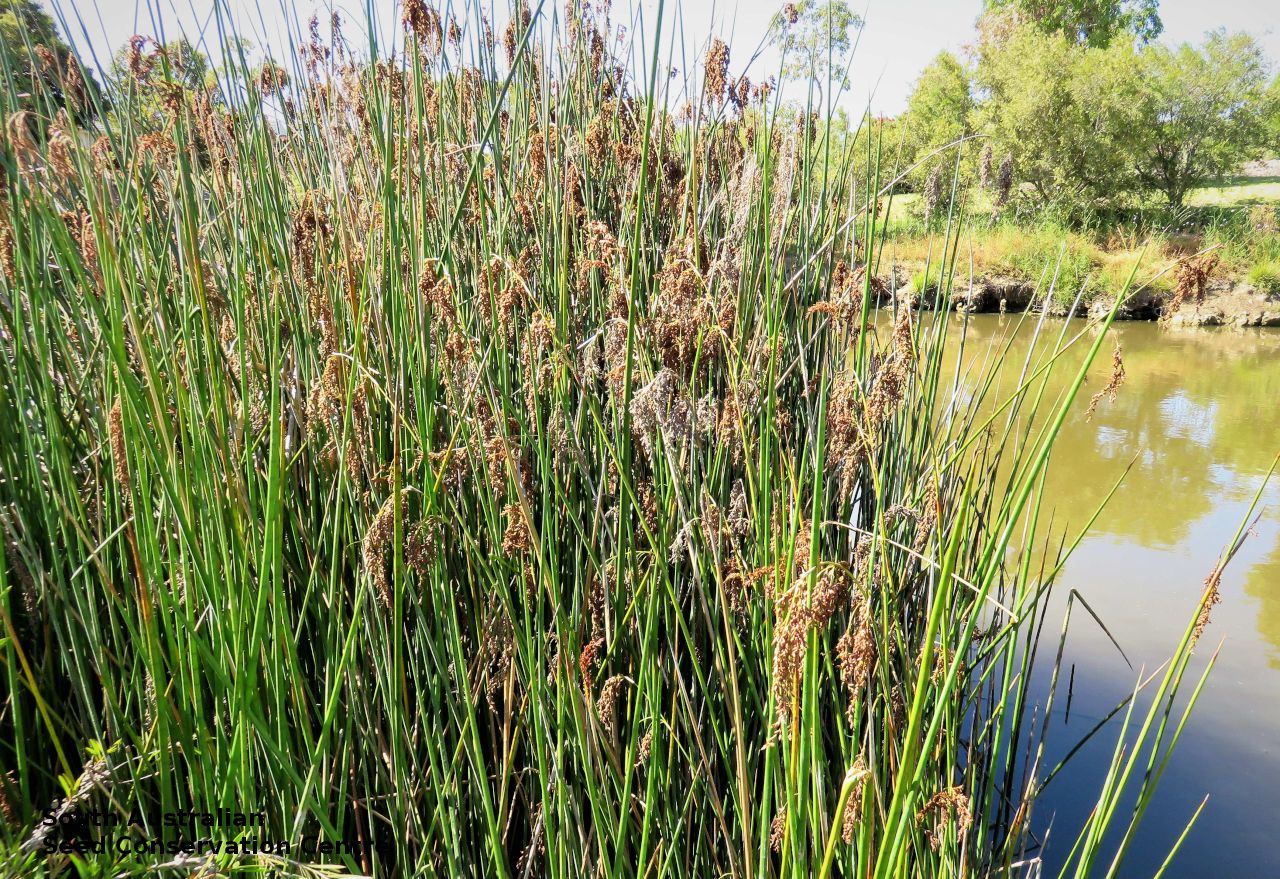
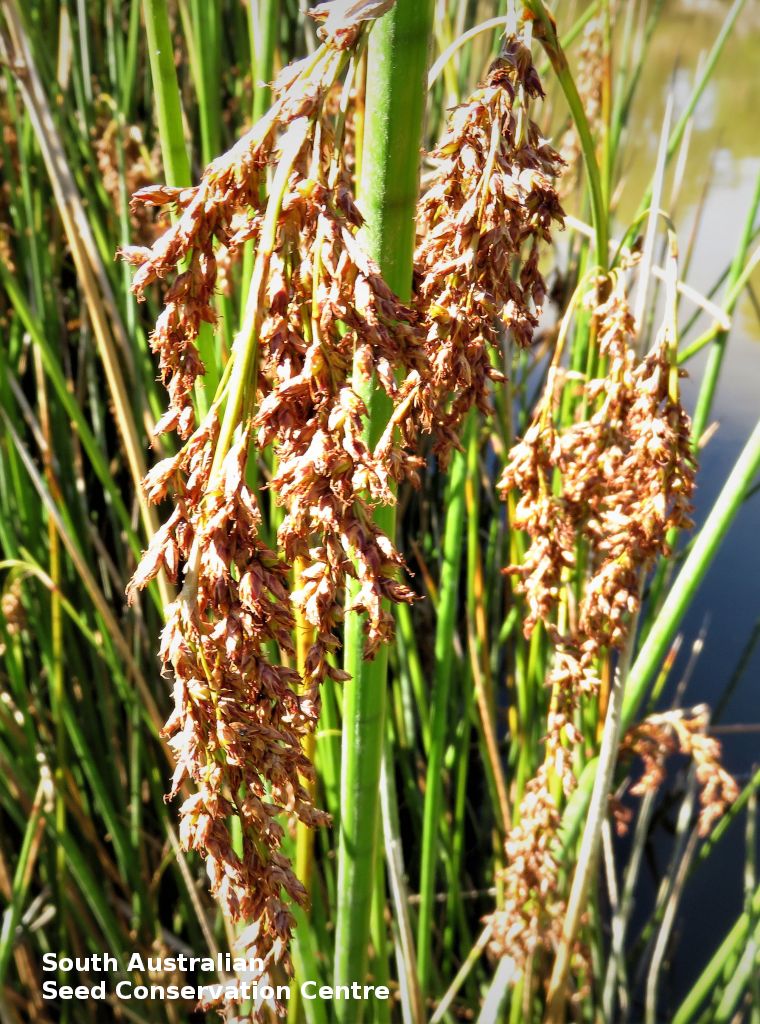
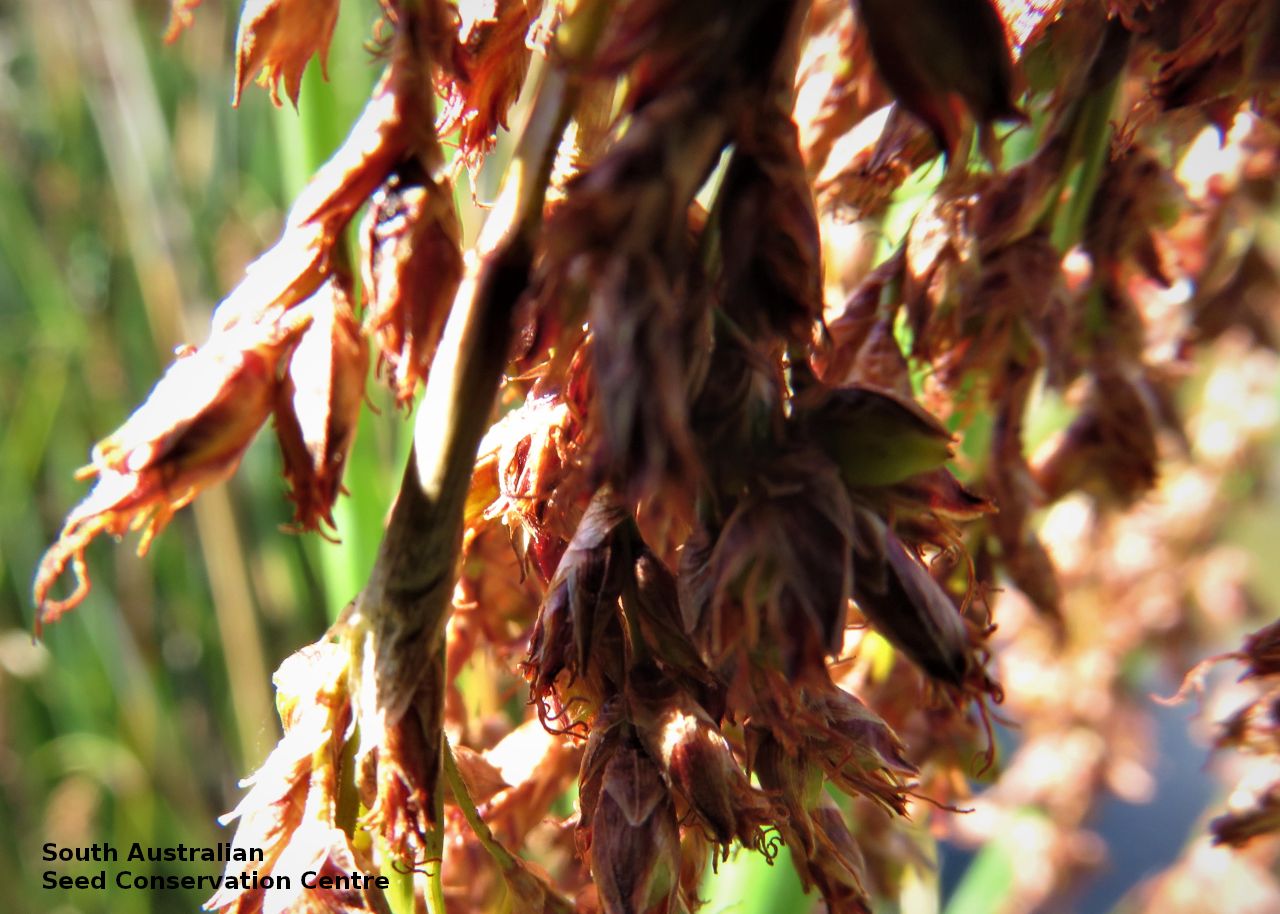
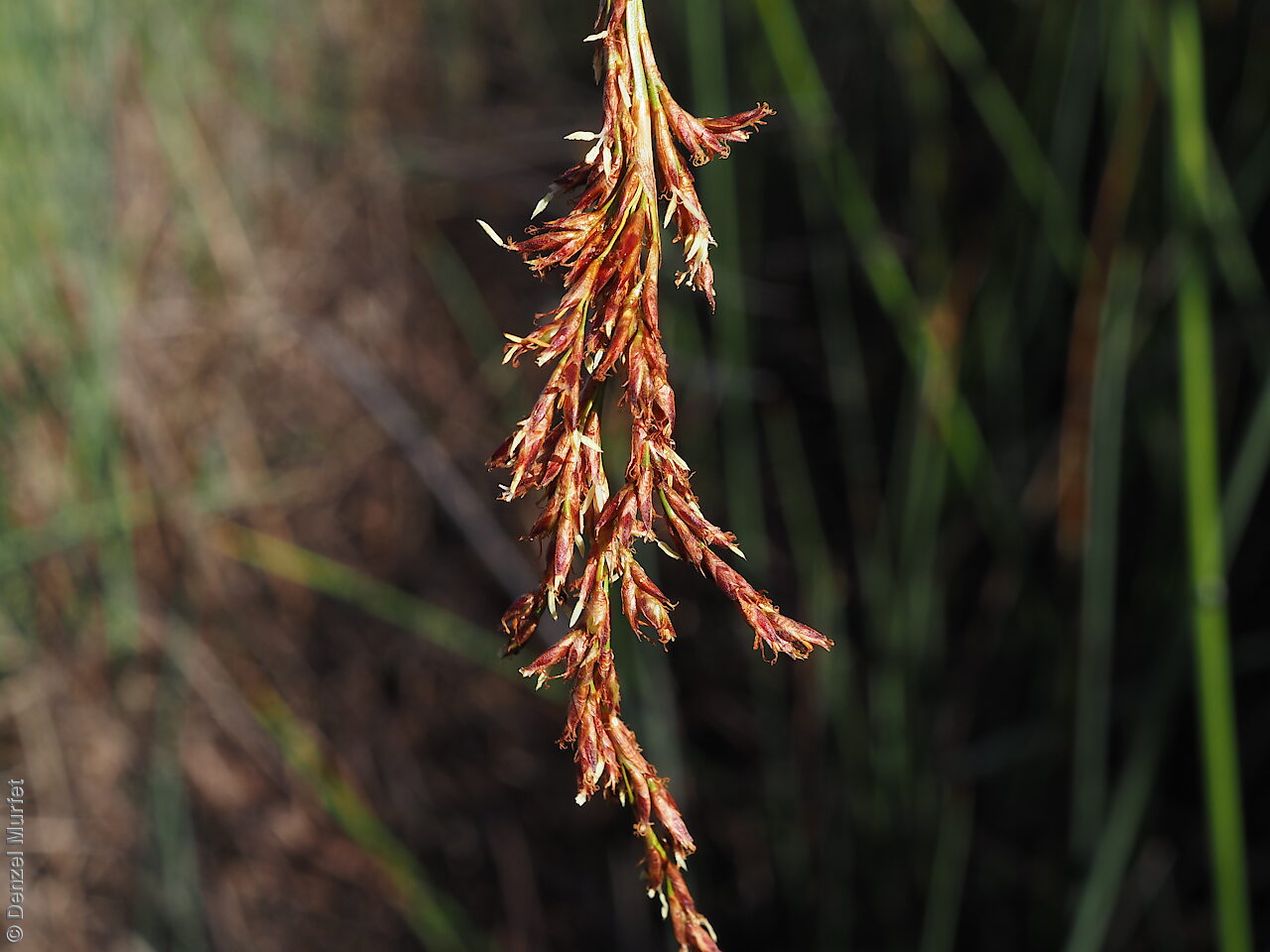
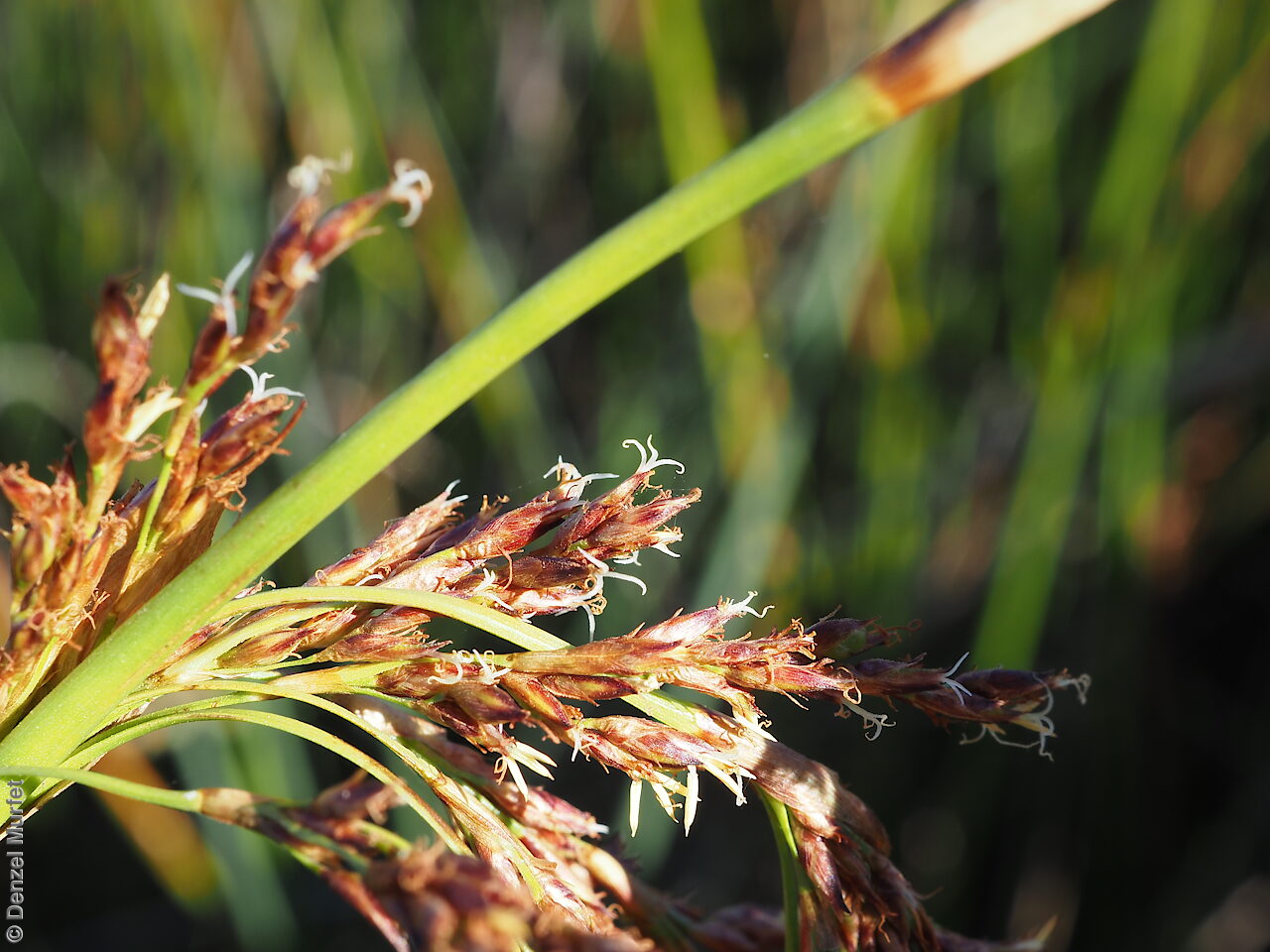
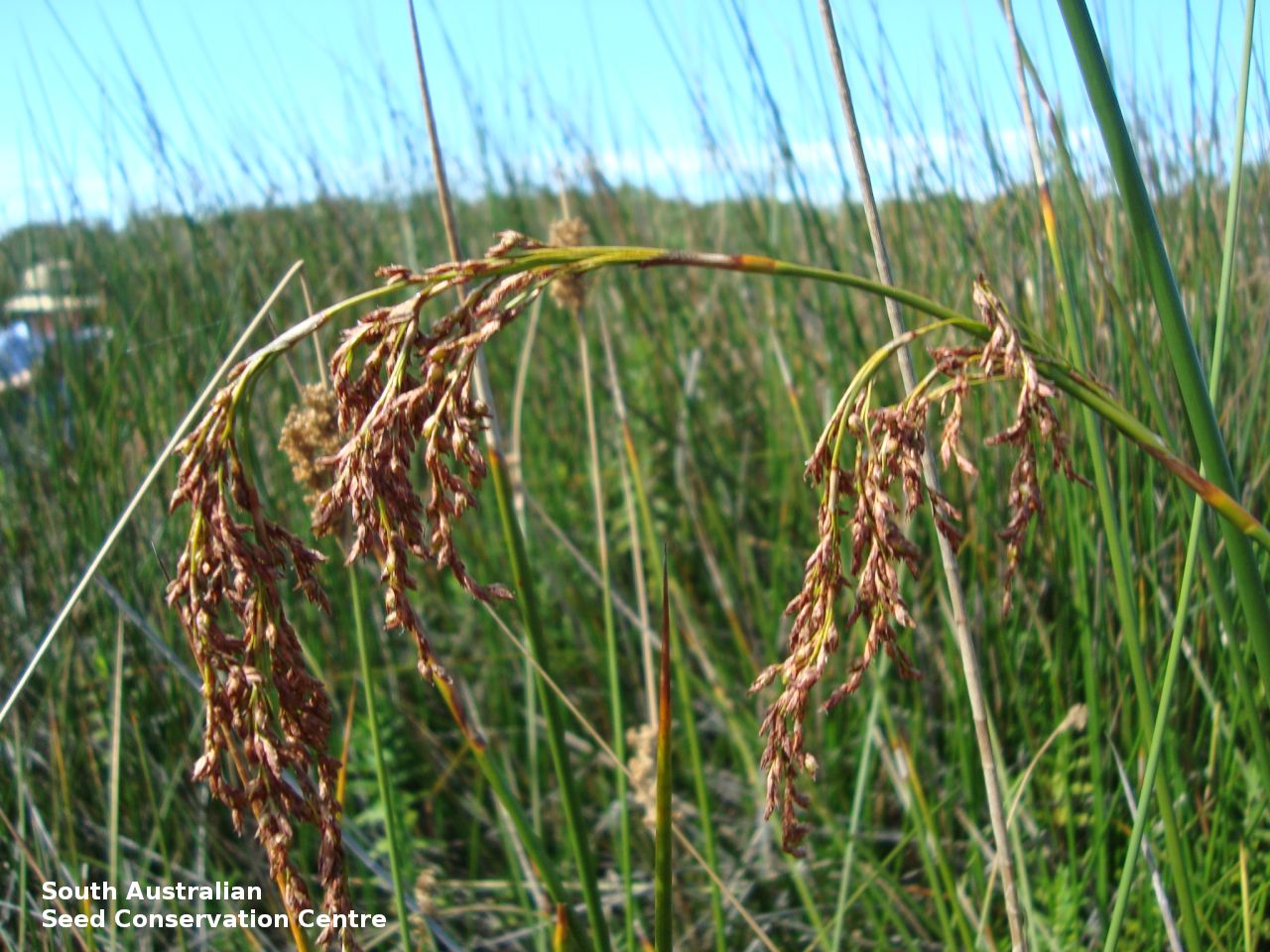
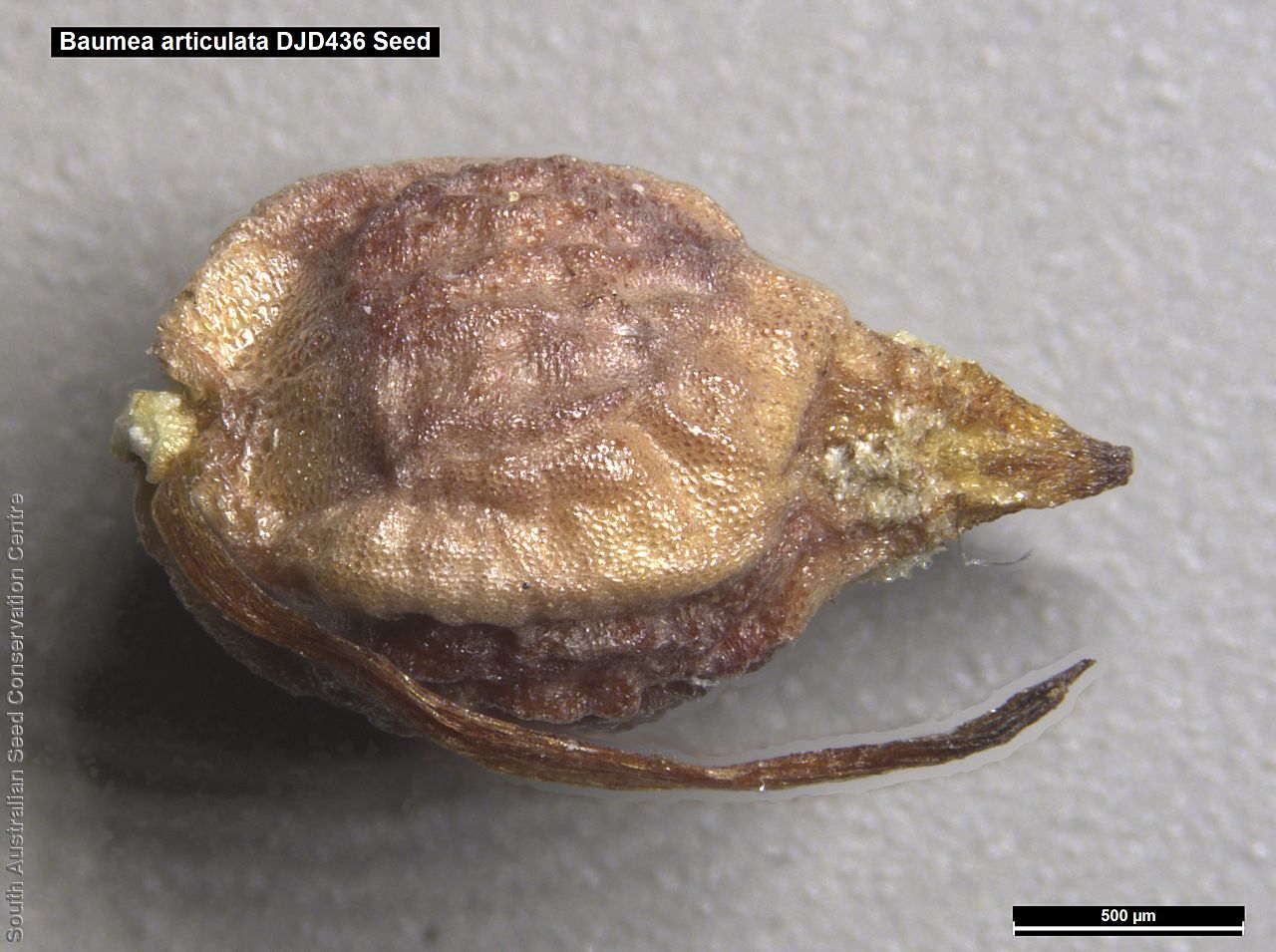
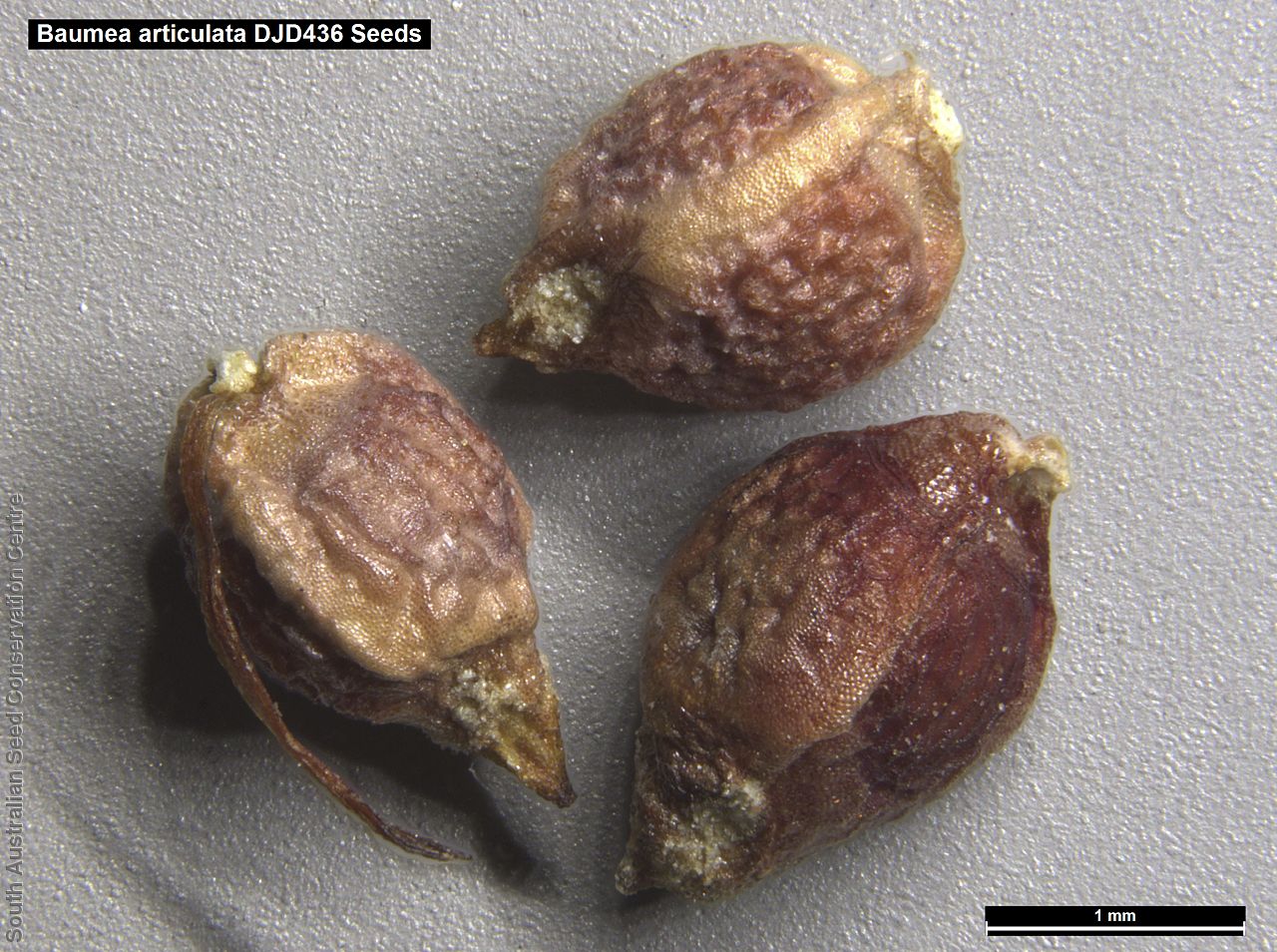

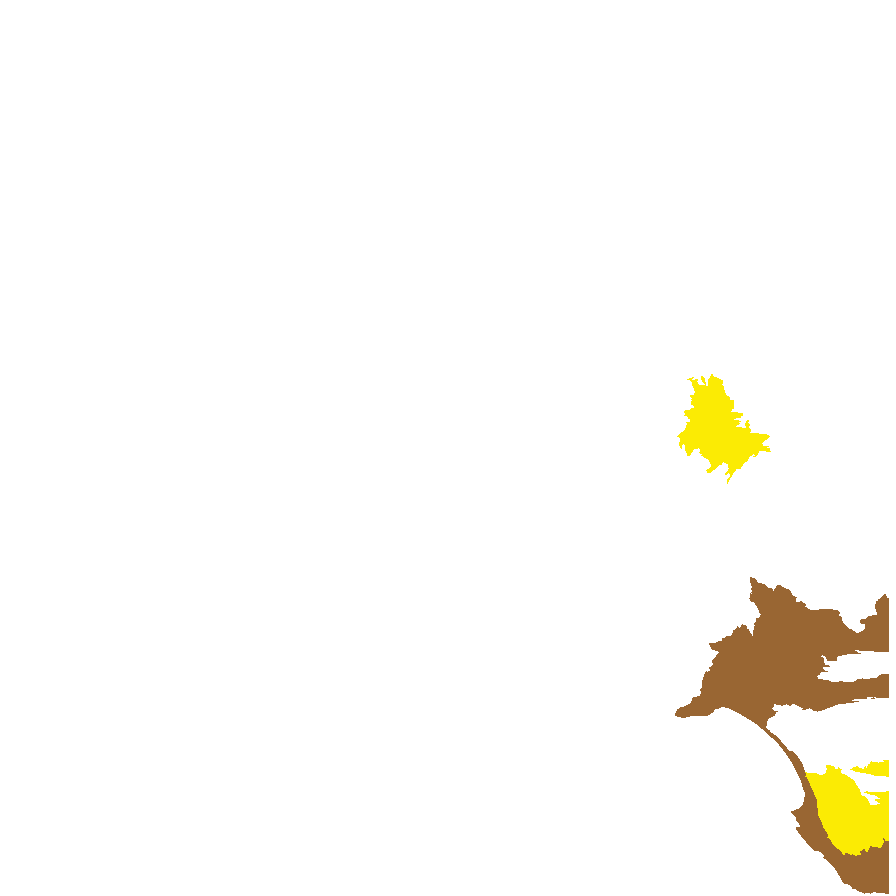
Botanical art
Prior names
Baumea articulata
Cladium articulatum
Common names
Jointed Twig-sedge
Jointed Twig-rush
Etymology
Machaerina from the Latin 'machaera' meaning a bent dagger or sword, and the feminine diminutive suffix '-ina", referring to the shape of the leaves of some species (formally Baumea named after Antoine Baume (1728 - 1804), a French chemist and inventor). Articulata meaning to have joints (septate), referring to the hollow stems and leaves with distinct transverse partitions.
Distribution and status
Found in standing water of lagoons, deeper swamps and streams, mainly in the Mount Lofty Ranges and the lower South-east in South Australia, with isolated occurrence in the Flinders Ranges. Also found in Western Australia, Queensland, New South Wales, Victoria and Tasmania. Native. Uncommon in South Australia. Common in other States.
Herbarium regions: Flinders Ranges, Murray, Southern Lofty, South Eastern, Green Adelaide
NRM regions: Adelaide and Mount Lofty Ranges, South Australian Arid Lands, South Australian Murray-Darling Basin, South East
AVH map: SA distribution map (external link)
Plant description
Perennial sedge with cylindrical stems to 2 m high that are hollow with distinct transverse partitions (septa). Leaves basal, long, like the stems but with the transverse partitions very prominent, the tips tapering and rather pungent, lowest bract similar but short. Flower in loose panicle to 40 cm long, drooping with numerous brown spikelets. Fruits are large brown drooping heads. Seeds are brown ovoid nut to 3mm long and 2mm wide with 3 vertical ridges arising from the base. Seed embryo type is capitate.
Seed collection and propagation
Collect seeds between February and May. Collect whole heads that are brown, containing dark hard seeds. Not all heads will contain seeds. Place the spike in a tray and leave to dry for one to two weeks. Then rub the spikes with a rubber bung to dislodge the seeds. Use a sieve to separate any unwanted material. Store the seeds with a desiccant such as dried silica beads or dry rice, in an air tight container in a cool and dry place available. Seed viability is variable depending on maturity of seeds when collected. This species is generally difficult to germinate, it has morphophysiological dormancy and complex germination requirements.
| Location | No. of seeds (weight grams) | Number of plants | Date collected | Collection number Collection location | Date stored | % Viability | Storage temperature |
|---|---|---|---|---|---|---|---|
| BGA MSB | 11,500 (17.1 g) 11,500 (17.1 g) | 50+ | 22-Mar-2006 | DJD436 Southern Lofty | 28-Jul-2006 | 90% | -18°C |
| BGA | 20,000 (30.93 g) | 28-Feb-2007 | RJB71586 Southern Lofty | 1-Aug-2007 | 95% | -18°C |
Number of plants: This is the number of plants from which the seeds were collected.
Collection location: The Herbarium of South Australia's region name.
% Viability: Percentage of filled healthy seeds determined by a cut test or x-ray.